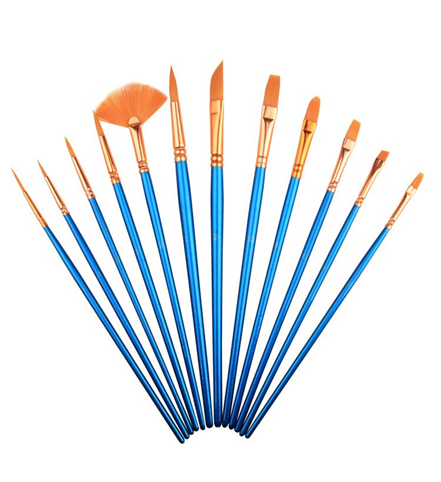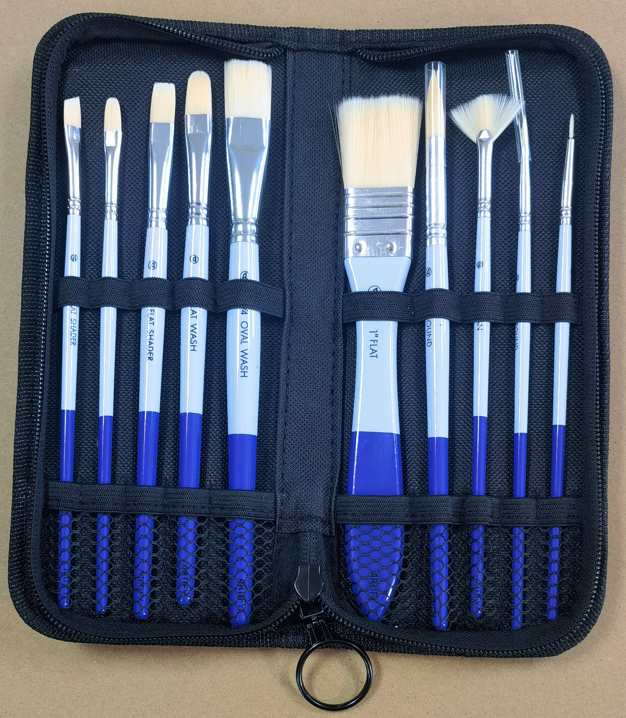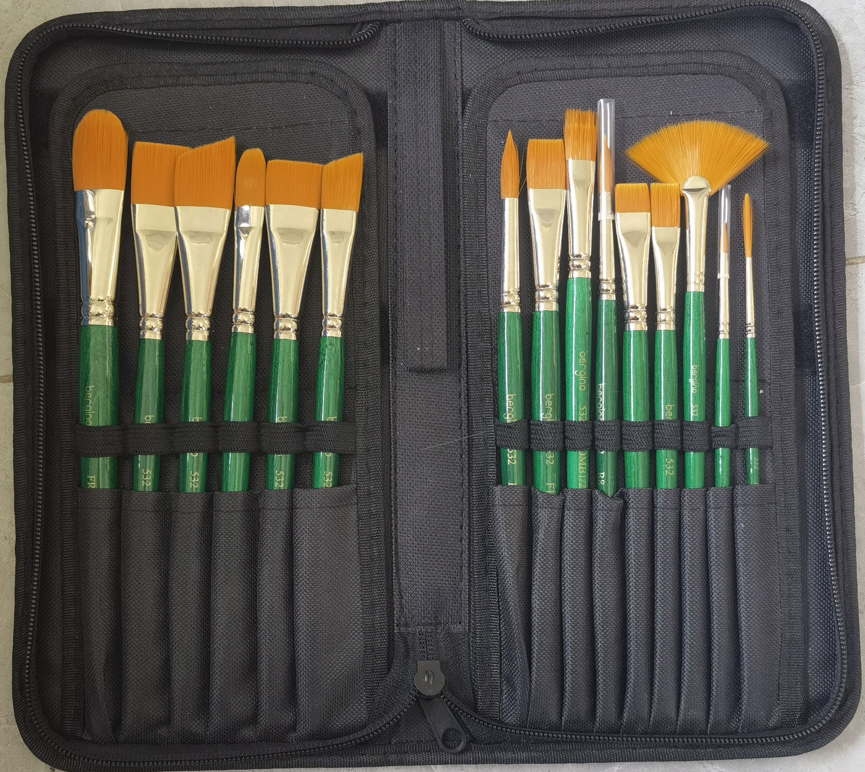As a professional manufacturer of paint brushes, we understand the importance of choosing the right tools for different painting applications. This article will delve into the distinctions between acrylic and oil paint brushes, offering insights to help you make informed decisions when selecting brushes for your artistic endeavours.

Choosing the appropriate paint brush is essential for achieving optimal results in painting projects. Whether you are working with acrylic or oil paints, understanding the differences between the brushes tailored for each medium can significantly impact your creative process and outcome.

Bristle Material:
Acrylic Brushes: Acrylic paint brushes typically feature synthetic bristles made from materials such as nylon or polyester. These brushes are designed to withstand the harsh nature of acrylic paints, which can be abrasive and quick-drying.
Oil Brushes: Oil paint brushes, on the other hand, often utilize natural bristles derived from animal hair, such as hog or sable. Natural bristles are preferred for oil painting because they hold a significant amount of paint and provide smooth, consistent application.
Flexibility and Stiffness:
Acrylic Brushes: Brushes for acrylic paints tend to be firmer and more resilient to withstand the heavy-bodied consistency of acrylics. The stiffness of synthetic bristles allows for precise control and crisp edges, making them suitable for detailed work and layering techniques.
Oil Brushes: Oil paint brushes offer greater flexibility and softer bristles, enabling artists to achieve subtle blending and smooth transitions between colors. The softer texture of natural bristles lends itself well to the buttery consistency of oil paints, facilitating expressive brushwork and textural effects.
Cleanability and Durability:
Acrylic Brushes: Synthetic brushes are easier to clean and maintain, as acrylic paints can be washed out with water or mild soap without damaging the bristles. Additionally, synthetic brushes are more durable and less prone to damage from prolonged exposure to acrylic paint.
Oil Brushes: Cleaning oil paint brushes requires the use of solvents such as turpentine or mineral spirits to dissolve the oil-based pigments. Natural bristles can be more challenging to clean thoroughly, and improper cleaning techniques may lead to bristle damage or deterioration over time.
In summary, the choice between acrylic and oil paint brushes depends on various factors, including the painting medium, preferred painting techniques, and personal preferences. While acrylic brushes are typically synthetic and offer durability and precision for acrylic paints, oil brushes often feature natural bristles and provide flexibility and fluidity for oil painting. By understanding the abovementioned differences, artists can select the most suitable brushes to enhance their creative process and achieve exceptional results.
What are the Differences Between Acrylic and Oil Paint Brushes?
The main differences between acrylic and oil paint brushes lie in the bristle material, flexibility, stiffness, cleanability, and durability. Acrylic brushes typically feature synthetic bristles for firmness and resilience against acrylic paints, while oil brushes often use natural bristles for flexibility and softer texture suited to oil paints. Additionally, acrylic brushes are easier to clean and more durable, while oil brushes require solvents for cleaning and may be more prone to damage.

As a leading manufacturer of paint brushes, we offer a diverse range of high-quality brushes tailored to meet the unique needs of artists working with acrylics and oils. With our commitment to excellence and customer satisfaction, we aim to provide B2B buyers with top-tier brushes that elevate their artistic endeavours. Contact us today.
